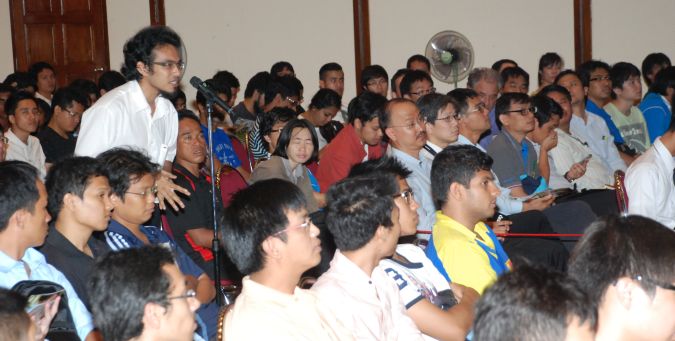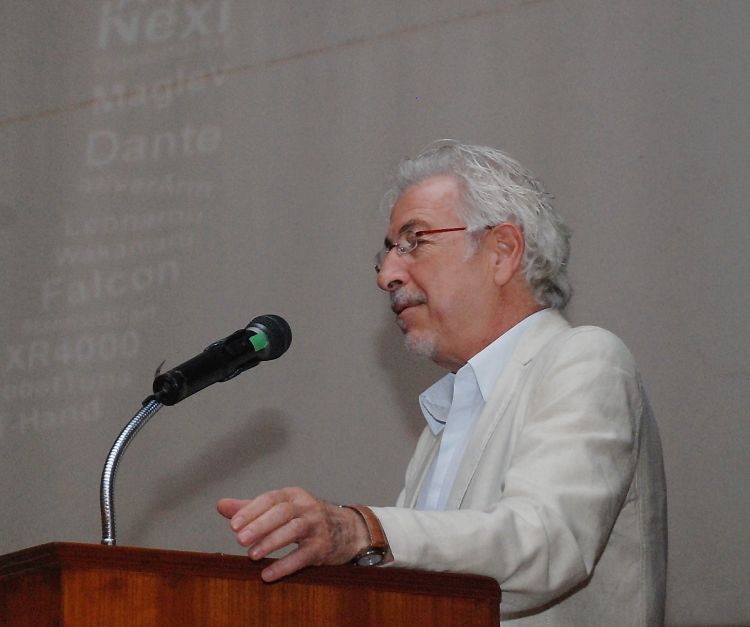“Robotics has come a long way in the past 50 years,” Prof. Khatib
remarked, as he narrated how robots have moved from acting as simple
locomotives to more complex systems integrating mobility and dexterous
movements. Human-robot interaction, and reconstruction of human motion
have helped in training robots to perform a wide variety of tasks.
He highlighted the National Robotics Initiative (NRI) unveiled by
President Barack Obama, and the emergence of a Global Robotics and
Automation Index called ROBO-STOX, which measures the performance of
robotics and automation-related companies.
Besides replacing humans in the manufacturing industry, robots are
also coming closer to humans and helping them perform a variety of
tasks. The combination of skills of both humans and robots have proved
to be extremely beneficial in surgery, he said. Citing the example of a
robot ironing a shirt, Prof. Khatib quipped that his shirt was the
perhaps first-ever to be ironed by a robot.
Wearable robots are another innovation, Prof. Khatib said, as he
described the complexities of simultaneous contact and motion control.
Among the remarkable work undertaken by robots include underground
mining, underwater archaeology, and working in disaster-affected
environments. “Safety and performance are always competing with each
other,” he averred.
Prof. Khatib also delved on the issue of increasing degrees of freedom
and mobility of modern-day robots. The brain of a human and the body of
a robot work are working together to create autonomous robotic systems,
he added. Another significant challenge for roboticists is getting two
robots to cooperate with each other. The concept of Autonomous Robotic
Systems, which involves perception, tasks and planning coupled with
sensing and execution, remains a major challenge.
An interactive session, emceed by AIT”s Dr. Manukid Parnichkun saw
students and researchers pose questions to Prof. Khatib on issues
related to robotics.
Prof. Khatib’s lecture was the first of the new series of AIT
Distinguished Lectures, which saw a packed AIT auditorium filled with
participants from numerous universities, institutions, private sector
companies and media. Led by their instructors, a large contingent of 40
engineering students from King Mongkut’s Institute of Technology,
Thonburi, made the trek across Bangkok to listen to Prof. Khatib who
literally “wrote the book” many students of robotics use as their
textbooks.
Prof. Khatib, who visited the AIT laboratories in Industrial and
Manufacturing Engineering (IME) and Computer Science (CS), complimented
the Institute for its post-flood recovery. He also paid a special visit
to AIT’s intERLab. He interacted with senior members of the AIT
Administration including the Vice Presidents and Deans.
AIT President Prof. Worsak Kanok-Nukulchai welcomed Prof. Khatib and
thanked him for being the first speaker at the new AIT Distinguished
Lecture Series.
Prior to commencing his lecture, Prof. Khatib expressed his happiness
at visiting AIT. He remarked that AIT is the only institute in Thailand
where the entire region gets connected through academics and research.
“In its mission, AIT is unique,” he added.
A photo gallery from the event is available at Facebook and
Google+.
Facebook
Google+


